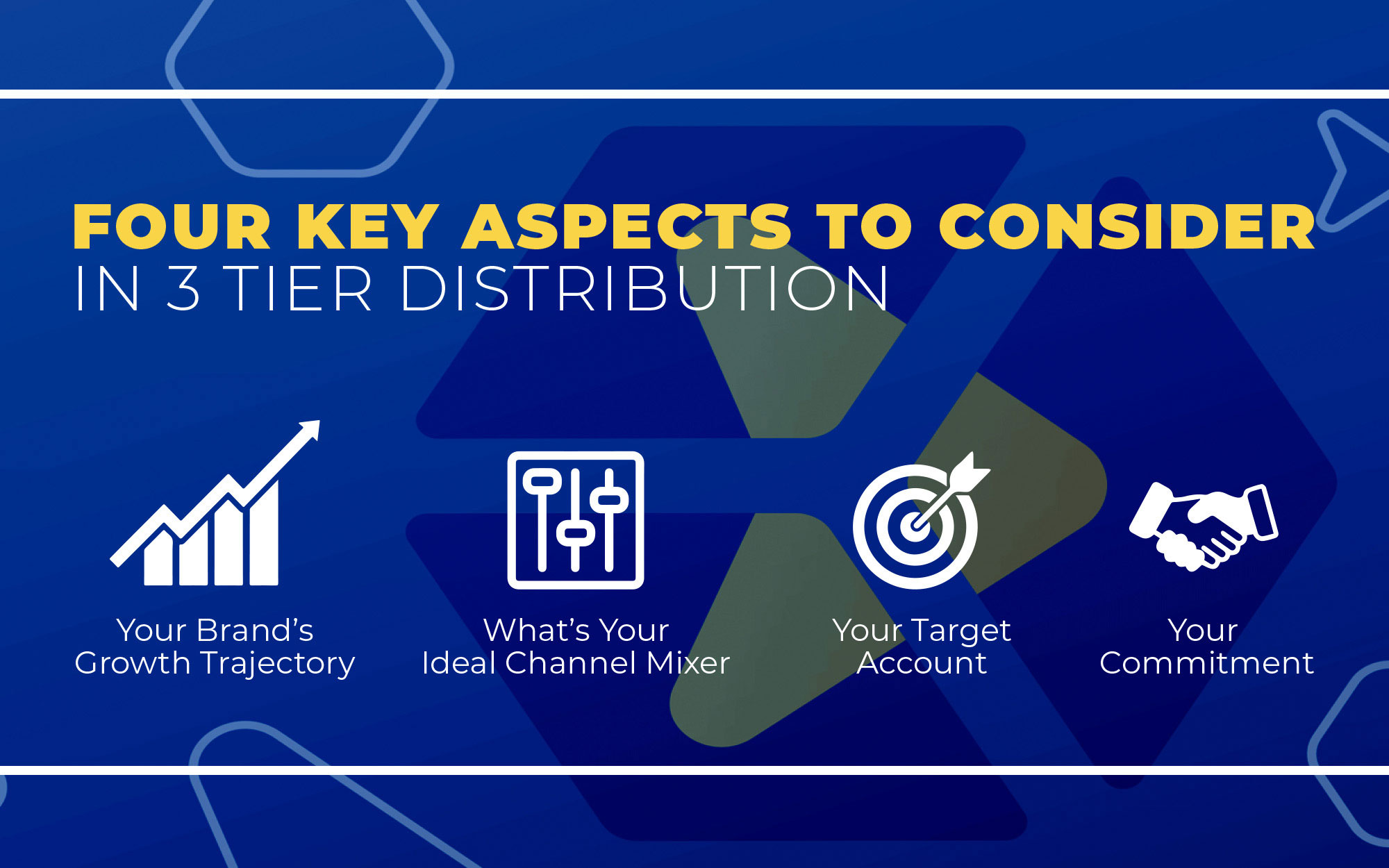Having worked closely with brands across each of the tiers in alcohol beverage distribution, mainly as a supplier, I often try to put myself in the shoes of a brand owner or sales leader. Growing a brand from concept to national distribution is no easy feat and doesn’t happen overnight. Here are several key considerations and questions to evaluate as you take your brand beyond your local market, friends, and family.
Your Brands Growth Trajectory
First and foremost, have an opinion on your brand’s growth strategy. What do you want your brand to become? How fast do you want to grow? Considering a time and financial perspective, are you content to grow locally, regionally, then nationally? How quickly can you scale your production to meet the demand you hope to create?
If you want to remain a locally focused boutique brand, choosing a distributor with a broad national footprint and portfolio may not be the right strategic choice.
As a thought exercise, picture your brand, time, and energy in five years. Are you working with your distributor in Texas one week, Illinois the next, and then meeting with a buyer in Florida the week after? This is the pace of a national brand. Conversely, are you content slowly building your mailing list with strategic media outreach and supporting key local on-premise target accounts. If so, your brand is likely not quite ready for national exposure.
What’s your Ideal Channel Mix?
As you look to the future of your brand, consider your channel mix. Are you ready to shift from the more margin accretive activities of Direct to Consumer (DTC) to more volume and complexity with three-tier distribution? Can you scale up production to meet the demands of large retailers giving you shelf space? Do you have your back-office infrastructure (AP, AR, compliance, inventory management) set up? Depending on the industry, this will take planning ahead or purchasing on the bulk market, which may impact your quality and profit. A distributor will also want to understand your DTC and digital strategies, which can be advantageous. For example, if most of my clients are local to Texas & Illinois, those are my target markets. However, suppose my brand’s online investments with Facebook & Instagram have the highest click-through rate (CTR) and return on advertising spend (ROAS) in Miami. I may need to expand my brand’s presence towards that demand. Defining your growth wish list and setting your internal channel priorities (c’mon – let’s also tie in some production and revenue targets) begins to set the stage for narrowing down your ideal distributor. But let’s dive a little deeper.
Your Target Account
Assuming you enter a new market, knowing your ideal distributor can significantly impact the timeline as you scale your brand. Is your target account a national chain like Target, a regional grocer like Rouses, a national restaurant chain like PF Chang’s, or the myriad of independent liquor stores and wine shops? Does your product belong at James Beard award-winning restaurants or mom-and-pop bodegas and noodle bars? Distributors have teams that call on each of these accounts, and as a brand owner, you need to connect across the broad landscape of stakeholders at the distributor level that service these accounts. Be specific and be actionable with your targets.
Your Commitment
There is still a bit of soul searching for yourself and your brand. One thing you don’t want to assume is that regardless of strategy and preferences, anyone but you will do the majority of the legwork in opening new accounts in your new market. Even with a fantastic distributor, one that you align with, one that “loves” your brand, you and your team will still need to be boots on the ground meeting with buyers. You must spend time and money in your markets. Learn to leverage the tools of customer relationship management (CRM), provide your distributor with introductions to new accounts, bring them cases to ship. Doing so will not only make you a better partner; it is all but required.
Choosing a distributor partner depends on how and where you want to grow your brand. Do the pre-work and know your strategy before you begin qualifying and meeting with potential distributor partners. Ideally, this will be a long-term driver of your brand’s success and having clear expectations and understanding that your investment of time and money is non-negotiable.
At Legacy Retail, one of our core competencies is helping guide brands on a journey with key national accounts. Having the right distributor network is central to winning in not only in this channel but also in the overall marketplace.




